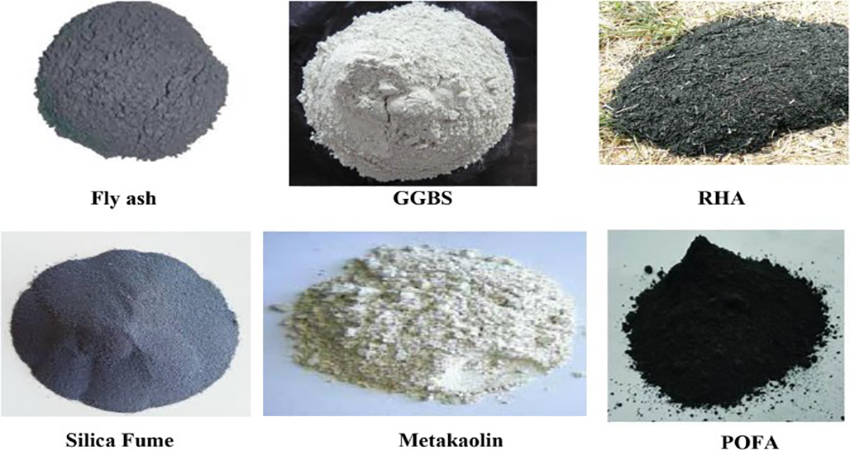Concrete is one of the most commonly used building materials in structures. Given this, emphasizing its quality, performance, and durability is one of the most essential aspects for the advancement of the industry. To improve the performance of concrete, additives are often added under specific conditions. A concrete additive is essentially a material that optimizes a concrete mixture and improves its quality by altering its properties. Concrete additives are typically added before mixing or during the process of concrete production. These additives come in various types, which we will introduce in this article from Afraz Beton Sarmad.
Types of Concrete Additives
Concrete additives come in various types, each of which is used for specific conditions and adds a new feature to the concrete. Additives differ in terms of their composition and performance and are divided into two categories: chemical additives and mineral additives.
- Types of Mineral Additives
Mineral additives include fly ash, blast furnace slag, rice husk ash, and silica fume. These materials increase the strength of concrete, save in the mixture, and reduce surface permeability.
- Types of Chemical Additives
If you want to produce concrete that is highly durable and advanced, you can use various chemical additives in the mixture. These additives improve properties like workability, early strength, and final strength. Chemical additives include water-reducing agents, retarders, water-proofers, gas-generating agents, accelerators, superplasticizers, anti-expansion agents for alkaline aggregates, shrinkage-reducing agents, binders, corrosion inhibitors, and others.
- Air-entraining additives create tiny, unrelated air bubbles in the concrete. These bubbles improve the durability of the concrete against moisture, freezing, and repeated thawing.
- Water-reducing additives, which include plasticizers and superplasticizers, reduce the amount of mixing water while maintaining constant workability of the concrete and mortar.
- Accelerators increase the rate at which concrete gains strength in a shorter time and reduce the temporary curing time.
- Retarders delay the setting time of concrete and counteract the accelerating effects of hot weather. They also delay the initial setting of concrete in difficult conditions.

Best Concrete Additives
Concrete additives play a crucial role in improving the properties and performance of concrete and can have varying impacts depending on their type and application. Below are some of the best concrete additives commonly used in the construction industry:
Color Pigments: To produce colored and decorative concrete, various pigments such as iron oxides, titanium oxide, and other colorants are added. These additives give concrete vibrant and permanent color and can be used in both interior and exterior decorations.
Air-entraining Additives: These additives, such as those based on amines, help distribute air uniformly within the concrete. This reduces the porosity of the concrete, increases compressive strength, and improves its stability.
Plasticizers: This group includes materials that are added to the concrete to enhance its plastic properties and improve control over corrosion blockages. These additives ensure better curing properties of concrete and resistance to corrosion blockages.
Strength-enhancing Additives: To increase the concrete's resistance to pressure and tension, additives such as foam silica, fiber powder, microsilica, and nanomaterials are used. These additives improve the mechanical strength of the concrete by increasing bonding between the concrete particles.
Cooling Additives: In hot climates, cooling additives such as fine aggregate ash, gypsum, and other natural materials with heat-absorbing properties are added to concrete to reduce its temperature and prevent premature freezing.
Corrosion-resistant Additives: Additives like sodium fluoride and amino acids are used to reduce the permeability of concrete and increase its resistance to corrosion blockages.
Each of these additives may require testing and approval based on their specific capabilities for use in particular projects. Therefore, the selection of the best additive depends on the project's specific needs, environmental conditions, and financial capabilities of the applicant.

Benefits of Using Additives in Concrete
Using concrete additives offers many advantages, some of the most important of which are outlined below:
- Accelerates the initial strength gain process.
- Controls the alkali-aggregate reactions.
- Delays the setting time.
- Increases workability of the concrete without altering the water-cement ratio.
- Improves resistance to freezing and thawing cycles.
- Improves and adjusts concrete properties.
- Reduces construction costs.
- Helps in sustainable development.

What Are the Applications of Concrete Additives?
Concrete additives have many applications, such as reducing the amount of water needed to achieve the desired slump by 5 to 10%. They also help delay the effects of hot weather on concrete, allowing it to reach strength and stability more quickly. Additionally, concrete additives reduce the curing time and accelerate the setting process. This helps delay the corrosion of reinforcing bars. Additives also improve concrete curing, reduce shrinkage, and reduce alkali-silica reactions. Adding additives improves the pumping capacity and bonding between old and new concrete.

